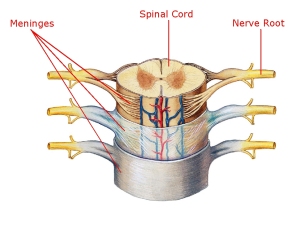Dr. Reddick here…..
About a year ago I went to a seminar in Chicago where I learned a new and still developing technique called Neurologic Relief Centers Technique™. NRCT helps relieve the symptoms of neurological disorders such as Fibromyalgia, RSD (Reflex Sympathetic Dystrophy), Migraines, Chronic Fatigue Syndrome, Parkinson’s Disease, Lyme Disease, Multiple Sclerosis and numbness and tingling of arms or legs.
The symptoms to these disorders can include headaches, migraines, chronic fatigue, digestive disturbances, sleeping difficulties, high blood pressure, brain fog, failed surgeries, body pain, facial pain, arthritis, nervousness, dizziness, breathing difficulties, wake up exhausted, communication problems, severe low back or hip pain and emotional difficulties.
So, what is Neurologic Relief Centers Technique™? (NRCT)
When you have had physical or emotional traumas (stress), tension can build up at the base of your skull and can pull on the meninges, which are not that flexible. Meninges are attached to all the nerve roots that exit your spine. When the meninges are pulled it could irritate those nerves.
at the base of your skull and can pull on the meninges, which are not that flexible. Meninges are attached to all the nerve roots that exit your spine. When the meninges are pulled it could irritate those nerves.
NRC Technique (NRCT) releases the tension in the meninges thus releasing the irritation to the nerves.
When your nerves are irritated you may experience many symptoms because nerves control every function of your body.
The vast majority of health problems other than infectious diseases could be stress and neurological in nature. We advise everyone to be tested to see if NRCT (Neurologic Relief Centers Technique™) could help them.
NRCT is non-invasive and is usually painless. I will perform a test to see how you respond to help determine if you are a candidate for NRCT. Many people respond to the test with a percentage of their symptoms relieved for minutes or days.
Since my first training a year ago, I have attended 2 more training seminars. I have practiced the technique and have had discussions with other doctors across the country. NRCT only has 200 practitioners nationwide. Now, I am ready to share my newfound health knowledge.
But, some people don’t know what these syndromes are. So this post will go over some of the syndromes and diseases that NRCT can help.
Fibromyalgia
Because there is a lack of a specific test for fibromyalgia, diagnosing fibromyalgia has become more often a ‘diagnosis of exclusion’—ruling out other conditions with a similar set of symptoms. Fibromyalgia tends to be treated rather dismissively, sometimes with cynical overtones. But the sufferers of fibromyalgia feel the pain, the sleeplessness, the fatigue, the depression, anxiety and stress.
The cause of fibromyalgia is unknown, but it is thought to be caused by long term stress—physical and/or emotional. The stress causes overactive nerve stimulation, which causes almost constant pain, which causes sleeplessness, which causes fatigue, which causes pain and on and on and on. There is no cure for fibromyalgia. Only reducing stress and controlling the symptoms.
RSD (Reflex Sympathetic Dystrophy)
Like fibromyalgia, RSD can be difficult to diagnose and required excluding other conditions that produce similar symptoms.
RSD usually follows a physical trauma—a broken bone, an automobile injury—but not always. It starts with burning pain and swelling in the injured area and then spreads to the rest of the body. Sometimes symptoms can disappear for years and then reappear with another injury. Again, like fibromyalgia, there is no cure, only controlling the symptoms.
Migraines
Migraines are severe debilitating headaches that can last anywhere from 4 to 72 hours. There are many different reasons for migraines, from hormonal imbalances and diet, to environmental allergens and seasonal changes.
Migraines can be the result of a direct cause or be a symptom of another condition or syndrome. The severe headaches can be located anywhere in the head and can have the feeling of stabbing, throbbing or stinging. They can be accompanied with visions of flashes of light or tingling in the arms or legs.
Some people get migraines only once in their lifetime, while others have migraines several times a month.
Accompanying symptoms of migraines can include light sensitivity and nausea with or without vomiting.
CFS (Chronic Fatigue Syndrome)
The Centers for Disease Control (CDC) describes CFS as a distinct disorder with specific symptoms and physical signs, based on ruling out other possible causes. So like Fibromyalgia and RSD, CFS is ‘diagnosis by exclusion.’
The exact cause of CFS is unknown, but may be caused by inflammation along the nervous system and that this inflammation may be some sort of immune response or process.
The most common symptoms of CFS are chronic and debilitation fatigue, muscle aches, joint pain and headaches. The symptoms can come on within a few hours or days and last for 6 months or more.
Parkinson’s Disease
Parkinson’s disease is a degenerative disorder of the central nervous system. It results from the death of dopamine-containing cells of the brain. The cause of cell-death is unknown.
Early in the course of the disease, the most obvious symptoms are movement-related, including shaking, rigidity, slowness of movement and difficulty with walking and gait.
Later, cognitive and behavioral problems may arise, with dementia commonly occurring in the advanced stages of the disease. Other symptoms include sensory, sleep and emotional problems.
Lyme Disease
Lyme disease is an inflammatory disease spread through a tick bite that is infected with the bacterium Borrelia burgdorferi (B. burgdorferi).
The first symptoms resemble the flu and include chills, fever, headaches, fatigue and muscle pain. If treated with antibiotics at this stage further complications can be avoided.
If not treated, the symptoms of advanced stage Lyme disease include decreased concentration, memory disorders, nerve damage, numbness, pain, paralysis of the face muscle, sleep disorders and vision problems.
Multiple Sclerosis
Multiple Sclerosis is an inflammatory auto-immune disease that attacks and destroys the autonomic nervous system. The myelin sheath that covers the nerves is attacked and scarred.
Symptoms vary and episodes can last for days, weeks or months. These episodes alternate with periods of remission.
Because nerves in any part of the brain or spinal cord may be damaged, patients with multiple sclerosis can have many different symptoms in many different parts of the body. Symptoms can include loss of balance, muscle spasms, numbness, tingling, coordination problems, walking issues, tremors, weakness, constipation, urinary issues, vision issues, facial pain, decreased attention span, poor judgment, memory loss, reasoning difficulties, hearing loss, slurred speech, difficult chewing and swallowing to name a few.
There is no cure for multiple sclerosis.
This is a short list of the disorders and symptoms that NRCT can relieve. NRCT does not cure the diseases and disorders; it just helps to control the symptoms. And it has been successful.
If you or you know of someone who is suffering from any of these symptoms or disorders, contact us for a FREE test. The test is non-invasive and absolutely free with no strings attached and no further obligation.



 Posted by Complete Wellness Center
Posted by Complete Wellness Center 





